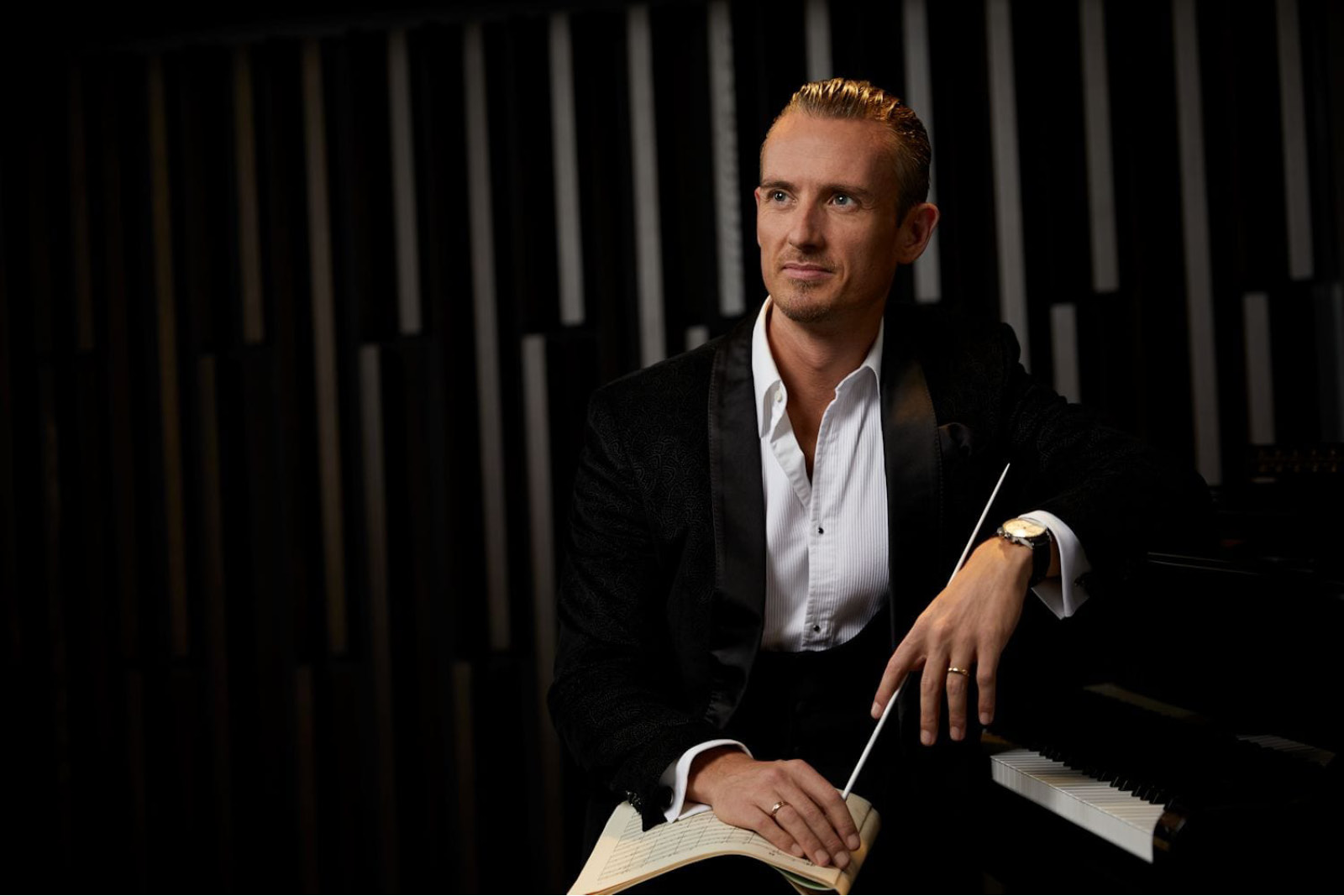The Sydney Symphony Orchestra’s new Symphony Hour concerts kicked off last month with Stravinsky’s Rite of Spring. The music for these shorter concerts has so far been works that show off the orchestra’s full gamut of colours in the indulgent acoustic of the Sydney Town Hall. To this end, Parisian impresario Sergei Diaghilev’s Ballet Russes of a century ago have proven a rich vein to tap for the SSO, with this second Symphony Hour opening with Debussy’s Prélude à l’après-midi d’un faune (Prelude to the Afternoon of a Faun) composed in 1894 but causing a stir in 1912, the year before the Rite ‘riot’, thanks to Vaslav Nijinsky’s erotic choreography.
 Alexander Shelley. Photo © Rémi Thériault
Alexander Shelley. Photo © Rémi Thériault
English conductor Alexander Shelley – who greeted Concertmaster Andrew Haveron and Assistant Concertmaster Fiona Ziegler with fist-bumps, in light of the COVID-19 pandemic – led a multi-hued reading of the Debussy, beginning with a luminous flute solo from Joshua Batty amidst harp and misty strings. Here Debussy’s voluptuous music was teasingly restrained, Shelley and the SSO giving a particularly intimate performance.
Shelley brought a similarly restrained sense of mystery and wonder to the main course on the program, Rimsky-Korsakov’s 1888 symphonic suite Scheherazade, inspired by the collection of Middle Eastern folk tales known as the One Thousand and One Nights. The stories are bound by a framing device: Scheherazade marries the ruler Shahryār, who, convinced that all women are unfaithful, executes each of his wives after their wedding night. Scheherazade survives night after night by telling such compelling stories, ending every evening on a cliff-hanger, that Shahryār keeps her alive.
Inspired by these tales, and perhaps by his experiences in the Russian navy, Rimsky-Korsakov’s work is pure adventure music, vividly orchestrated. He removed the evocative titles he had at one point given each movement, and his music leans more towards thematic development than straight programmatic writing – but the work nonetheless begins with a stern theme (presented with formidable depth and power by the SSO’s lower brass) which has been associated with the character of Shahryār, Haveron’s violin spinning wondrous tales as Scheherazade, linking the movements together.
Shelley eschewed raw sensation in the first movement, favouring instead a layered, detailed sound, building the intensity in waves – a polished, long-view performance that, while affecting, somehow lacked a little of the sheer swashbuckling fun this music can exude. With the concertmaster playing such an important role Scheherazade could almost be a violin concerto – but for the many substantial, brilliant solos shared out across the orchestra. Highlights in this performance included Leah Lynn’s burnished cello, Todd Gibson-Cornish’s plangent bassoon in the Lento, and slippery, rippling solos from James Burke’s clarinet in the third movement. Shelley brought more swashbuckling to the last movement, which is full of exciting flourishes, before Haveron’s gold-spun final solo offset the gentle return of Shahryār’s theme, finally sated. In the hands of Shelley and the SSO musicians, this was compelling musical storytelling.
The Sydney Symphony Orchestra presents Scheherazade at the Sydney Town Hall until March 13
The Sydney Symphony Orchestra presents Debussy, Mozart and Rimsky-Korsakov at the Sydney Town Hall on March 13












Comments
Log in to join the conversation.